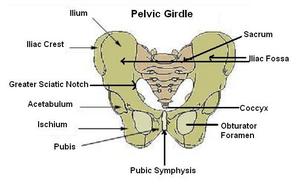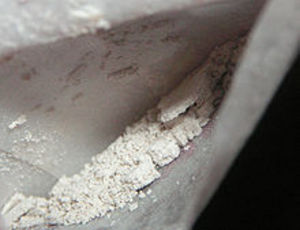After listening to Roy Orbison’s Only The Lonely again, I wanted to know more about him. He had one of the most incredible voices in the history of Rock and Roll. And this was in the day when there were no studio enhancements to speak of. There were no elaborate sound boards, and mixing systems back then either. You plugged in your instruments and microphone, and you either sang well or you didn’t. (He did!)
Nik Dirga wrote in a Roy Orbison CD review, “Roy Orbison was the voice of sorrow. But sorrow never sounded quite so sweet. For nearly 30 years, Orbison was the quintessential spokesman for the brokenhearted, with his trademark sunglasses, hiding his eyes, so all you would focus on was the voice.”
And by the way, he was not blind, as many people believe. One night when he was about to perform, he realized that he had left his glasses on the plane. He did suffer from poor eyesight, and so in desperation, he grabbed a pair of prescription sunglasses that he had with him. The band thought they looked cool, and a legend was born.
Even though Orbison originally signed on with Sun Records (as did Elvis Presley, Johnny Cash, Jerry Lee Lewis, and Carl Perkins), he had only limited success there (Ooby Dooby-1956.) He then contracted with RCA for a short while, and eventually went on to sign with Monument Records in Nashville. Fred Foster urged him to break with his previous style, and he started writing his own songs, and co-writing with Joe Melson, and later Bill Dees. He also created a very unique sound in Rock and Roll, with his almost operatic voice, complete with falsetto, and a three octave range. His release of Only the Lonely reached #2 on the charts in 1960.
He was the headliner in 1963 in England, on a show that featured the Beatles, not yet popular in the U. S.
He was an outstanding songwriter, most remembered for his gut-wrenching ballads of lost love. (And of course, for his infamous Oh, Pretty Woman, released in 1964, which became a worldwide hit.)
Hearing his sad songs, you would naturally assume that he had suffered the greatest heartbreak of any man on earth, but that was to come later.
His life was indeed tragic. His first wife, Claudette, died in a 1966 motorcycle accident. From research, it seems that Roy and Claudette were on separate bikes, and her motorcycle crashed into a truck, that unexpectedly pulled in front of her. She died an hour or so later from multiple injuries. (Earlier he had written the Everly Brothers’ hit, Claudette, about his wife.) After her death, he found it difficult to write for quite awhile. To deal with his grief, he immersed himself in concert engagements.
Then in 1968, just 2 years later, he was on tour in England, when he received the news that his house in Hendersonville, Tennessee had burned down, and 2 of his 3 sons had perished in the fire. The youngest son, Wesley, was rescued from the fire, by Roy’s parents.
And in 1973, his older brother, Grady, was killed in an auto accident, while on his way to spend Thanksgiving with Roy.
In an interview on CBS Morning News in 1986, Roy said, “Through the grace of a loving God and Jesus Christ, and my faith, and good friends and kindred souls, and people who have been through things that I had just gone through-through their love and understanding, also through the career, I worked my way through that…
During these years, he continued to tour worldwide, and married his second wife, Barbara, in 1968. She was a of German descent, and later became his manager.
In 1978, he collapsed while running up some bleachers, and as a result, discovered that he needed coronary bypass surgery.
He was offered an opening slot on the Eagles 1980 tour, and later released a duet, That Loving You Feeling Again, with Emmylou Harris. Several famous recording artists, including Linda Ronstadt, Don McClean, and Van Halen covered his songs. Those hits, as well as re-releases of his own songs made him popular in the U. S. again, as a concert performer. In 1987, he was inducted into the Rock and Roll Hall of Fame. That same year he also recorded a duet remake, with k.d. lang, of his hit Crying.
In the late 80s, he achieved notoriety as a member of the Traveling Wilburys, with band members Bob Dylan, Tom Petty, George Harrison, and Jeff Lynne.
Orbison was on the brink of an amazing comeback, when he died suddenly of a massive heart attack, at the age of 52. While visiting his mom, in the Nashville area, he complained of chest pains, and was rushed to the hospital, where he died that night, December 6, 1988.
The release of his album, Mystery Girl (#5 on the charts-1989), after his death, became the highest charting album of his career, reaching platinum.
Oh, Pretty Woman was the theme song for the blockbuster movie Pretty Woman, starring Julia Roberts. His song, In Dreams, was also used in a scene in the movie, Blue Velvet.
The amazing thing about Roy Orbison is, that even though he suffered horrendous, tragic events in his life, he overcame so many of them, and gave a gift to the world. That gift was his voice, and we should be forever grateful. Elvis Presley called him, “the greatest singer in the world.”
He is buried in the Westwood Village Memorial Park Cemetery, in Westwood, California, in an unmarked grave.
Sources: http://www.8notes.com/biographies/orbison.asp
http://www.musicianguide.com/biographies/1608001369/Roy-Orbison.html
http://www.8notes.com/biographies/orbison.asp
http://blogcritics.org/archives/2003/09/05/132639.php
http://www.youtube.com/watch?v=6xUbebgSif4&feature;=related
http://en.wikipedia.org/wiki/Roy_Orbison
http://royorbison.musiccitynetworks.com/?&loc;=0
http://www.famoustexans.com/royorbison.htm
http://blogcritics.org/archives/2006/03/27/054325.php
http://www.youtube.com/watch?v=ChOG30kGbgA





